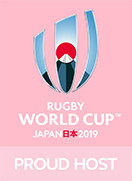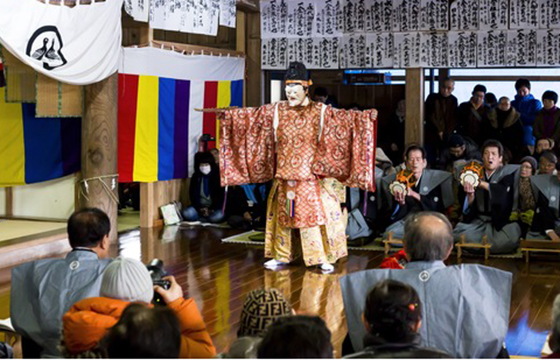
Mizumi Dengaku and Noh Dances

In 1250 (Kencho 2), during the Kamakura period, the people of this village performed dengaku (rice-planting) dances to entertain the Emperor's regent, Houjou Tokiyori, who was obliged to make an extended stay there while the roads were impassible due to a heavy snowfall.In return, Tokiyori taught them how to perform Noh dances.
This was the beginning of the juxtaposition of the dengaku and Noh dance traditions, and it led to the Mizumi Dengaku and Noh Dances.
Each year dengaku dances such as Karasutobi (Flight of the Crow) and Notto (Celebratory Words), and performances of Noh plays such as Shikisanba, Takasago, and Rashomon, are presented at the main building of the Ukan Shrine as offerings for a bountiful harvest and peace and tranquility throughout the nation.Based on deep religious beliefs associated with Mt.Hakusan, the forms and rituals linked with the performance, such as the method for assigning roles, fasting by the dancers, and purification in the Mizumi River, have been handed down from generation to generation.
Historically, the prototype of Noh called wakasa sarugaku flourished in this village, and many old Noh masks are still extant.
This was the beginning of the juxtaposition of the dengaku and Noh dance traditions, and it led to the Mizumi Dengaku and Noh Dances.
Each year dengaku dances such as Karasutobi (Flight of the Crow) and Notto (Celebratory Words), and performances of Noh plays such as Shikisanba, Takasago, and Rashomon, are presented at the main building of the Ukan Shrine as offerings for a bountiful harvest and peace and tranquility throughout the nation.Based on deep religious beliefs associated with Mt.Hakusan, the forms and rituals linked with the performance, such as the method for assigning roles, fasting by the dancers, and purification in the Mizumi River, have been handed down from generation to generation.
Historically, the prototype of Noh called wakasa sarugaku flourished in this village, and many old Noh masks are still extant.
TM © Rugby World Cup Limited 2015. All rights reserved.
)
)
)